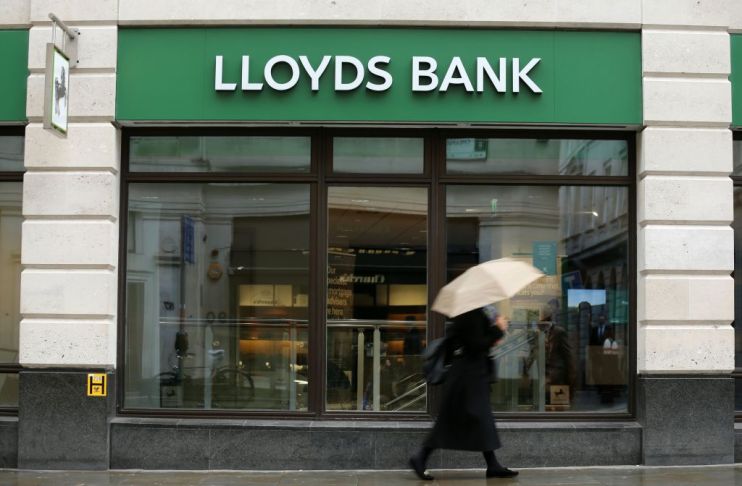Coronavirus: If we get it right, there are grounds for optimism for SMEs

The Government have acted promptly and in scale to address the unprecedented crisis we face. In addition to the schemes to protect jobs and certain hard-hit sectors, such as hospitality, some of the schemes are intended for distribution through the banks. These include:
- Coronavirus Commercial Financing Facility (CCFF) where the Bank of England buys debt from larger companies;
- Coronavirus Large Business Interruption Loan Scheme (CLBILS) which provides a government guarantee of 80% to enable banks to make loans of up to £25m to mid-market firms with an annual turnover of between £45m to £500m; and
- Coronavirus Business Interruption Loan Scheme (CBILS) which provides a government guarantee of 80% to enable banks to make loans of up to £5m to SMEs with an annual turnover up to £45m.
The CCFF is easy to administer because there are fewer larger companies and they are typically less exposed to the crisis. People will still pay their insurance, water, internet or mobile bill and the providers will be more resilient than smaller companies.
Read more on coronavirus: Is the CBILs scheme working?
The problems arise as you address the issues of smaller companies because there are hundreds of thousands more, each with differing needs.
The initial CBILs scheme was an evolution of the Enterprise Finance Guarantee Scheme (EFG) but with more flexible terms. However, as with many private and public sector schemes, it was in need of finessing once live to drop unnecessary baggage such as personal guarantees. The scheme was also expanded to include mid-market firms under the CLBILS who were previously excluded.
The improved schemes are now in place, but cash still isn’t flowing freely to SMEs, and the question is why? The transmission mechanism from the Chancellor’s statements to cash reaching SMEs, even in his own Yorkshire constituency, appears to be stuttering. People are asking if the banks could be doing better.
The good news is that after a slow start the machinery of the banks is beginning to move and loans are now reaching SMEs. The slow start is understandable because first and foremost the banks needed to assess their own position. The effects of a banking collapse are only too recent in our memories; the cost to jobs and the taxpayer; and the years of slow growth, are to be avoided.
The announcement of the ‘lockdown’ was followed by an intensive period of portfolio management to assess the impact of the banks’ loan books on their own balance sheets. All available resource was used to understand the liquidity position of each SME client and assess their needs.
Assessing each SME and management team is resource intensive and time consuming. Just like with the NHS, perhaps we should send out for the retired bankers with years of credit judgement to come back and support the national effort?
The assessment process is now under way and although the economic outlook is constantly changing, credit facilities are now increasing in number. No high street commercial banker likes to lose money, even when 80% guaranteed by the taxpayer so they are understandably cautious. Banks always have been and always will be pro-cyclical.
So the green shoots are showing in the number of loans but how can they be improved?
There are two simple solutions: 1) provide greater encouragement to lenders to provide capital to meet the shortfall in lending; and 2) increase the number of lenders.
Current regulations encourage banks to provide asset backed loans widely and cheaply. The regulatory capital requirement is low so these loans are freely available. Unfortunately, in a service-led economy like the UK, few SMEs own significant fixed assets and can’t access this funding. The British regulator’s interpretation of Solvency II encourages our capital-rich insurance companies to buy liquid government and investment grade bonds and not to invest in medium-term loans to asset-light SMEs.
A change of interpretation would be at minimal cost to the taxpayer but would see vast sums made available to British smaller firms.
But how would it reach the SMEs? We need more lenders. Thirty years ago there were many banks, well-resourced and lending widely. After significant consolidation, there are now only a few. However, the British Business Bank has been addressing this problem by supporting the expansion of many non-bank lenders. A secular shift has started where lending is increasingly provided by direct lending funds rather than banks. This shift has many years to go.
Direct lending funds have grown into the space left by the bank consolidation and regulatory changes. To its credit, the British Business Bank has nurtured this vital source of capital for SMEs and under intense pressure is providing invaluable support today. There are now over fifty non-bank lenders in the UK, such as my firm Beechbrook Capital who has benefited from that support, who can provide a partial but material solution to the short term liquidity problem.
There are grounds for optimism for SMEs and their desperate search for liquidity at such an unprecedented time. The Government schemes are now clear, the banks are responding, the British Business Bank are excelling and the non-bank lenders are eager to help.
The next question is who finances the exit strategy from this crisis? Who finances new stock levels when the consumers are back? Who finances the taxes and rents which are deferred and not cancelled? Who refinances the short term liquidity facilities?
The answer includes the proposed regulatory changes above to release capital into this space combined with the resources of the banks and direct lending funds to deploy it intelligently, flexibly and supportively.